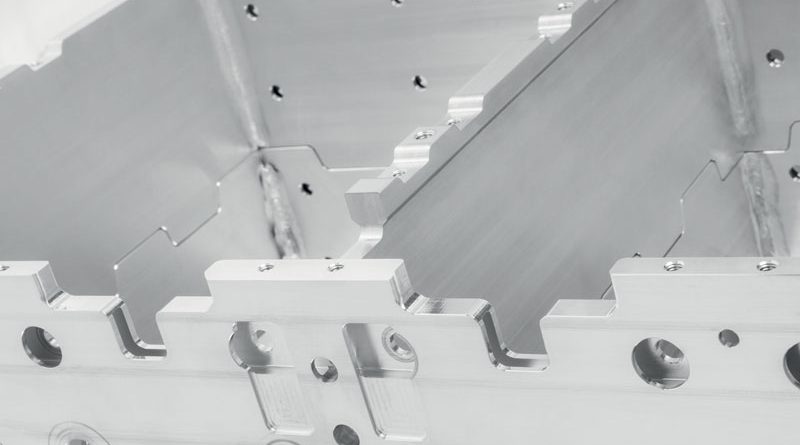New Hydro HS 400 Al-Mg-Si Alloy for High Strength Extrusions
Material research from Hydro has led to the development of a new high-performing aluminium alloy based on the 6082, particularly useful for structural components of next-generation cars
by Alberto Pomari
Developed at Hydro’s Innovation and technology center in Finspång, Sweden, the Hydro High Strength 400 aluminium alloy (HHS 400) is unique to the automotive industry and now available for original equipment manufacturer (OEM) qualifications.
In order to get to know this interesting metallurgical novelty better, we interviewed Susanne Koch, metallurgical engineer at Hydro’s Innovation and technology centre and Nunzio Cuppoletta, automotive market director for Hydro’s business area Extruded Solutions.
Why and how did you think about a new 6000 alloy, given the wide range of Al-Mg-Si compositions with medium level mechanical properties?
The development of HHS 400 is part of a bigger initiative in high-performing high-strength alloys based on the 6082 carried out by our research center in Finspång in Sweden. The new HHS 400, particularly interesting for the automotive industry, has been developed following three years of studies and tests carried out in our metallurgical laboratory. The alloy was designed in three phases: we started off with the analysis of the chemical composition of many alloys, comparing them with their respective metallurgical and processing properties, in order to make a first choice of different possible combinations of alloying agents. In the second phase, the most promising composition was chosen from the gained lab results and modified for upscaling to industrial scale production. In the third phase we cast a significant industrial lot, to carry out tests and extrusion trials. The HHS 400 alloy was first of all developed for extrusions destined to structural non-crash uses and especially for the automotive industry. From a metallurgical standpoint it is an alloy in the 6000 series (Al-Mg-Si) designed to compete with less alloyed alloys in the 7000 series (Al-Zn-Mg); the latter have undoubtedly excellent mechanical strength properties, but there are issues regarding the possibility of recovering and recycling machining scraps. Actually, these cannot be mixed with the more widespread 6000 alloys because of their zinc content, thereby forcing their manufacturers and users to face extra costs for the selection and separation of scraps. Besides, 7000 alloys are less suitable for extrusion compared to 6000 alloys and this not only implies lower productivity but also shape limitations in the figures which may be obtained, especially for complex hollow profiles. This is a very important point linked to the development of this new alloy; it is not a coincidence if many leading automotive manufacturers are changing their specifications to allow the use of 6000 alloys only.
What performances can this new alloy achieve?
As we know, normally standard 6000 alloys now available on the market rarely go beyond YS (Yield strength) values of 320-330 MPa. HHS 400 enabled us to reach YS values above 370 MPa, UTS (Ultimate tensile strength) greater than 400 MPa and elongation at A5 of 8% on sections ranging from mean thickness substantially lower than 3 millimetres. With these properties, the new HHS 400 alloy compares well against 7000-series alloys in terms of price, handling, welding, productivity and availability, and is also a possible substitute for steel and for other existing 6000-series aluminium alloys, with its strength enabling thinner-walled solutions. Although it is a premium product with very high mechanical properties, HHS 400 finds the right balance between advancements in technology with improved cost performance.
For what types of automotive components is the new alloy best suited?
HHS 400 according to us is highly suitable to create structural parts of the car, such as the vehicle chassis, and at any rate for elements of the chassis subject to stress. In this respect we are obtaining all necessary qualifications by OEMs. We are of course also thinking about other applications. The new alloy can be used in chassis or structural components for trucks or buses, and in electric cars, for instance with side members to protect the battery
How did your clients react to this new alloy?
The automotive market is difficult, but it is evolved. It is sensitive to purchase costs but can evaluate the improvement of performances and the sustainability of the process. Reactions were therefore very positive, the market acknowledges the value of the better mechanical properties, which
contribute to a reduction of the cost of the finished product.
In addition to cost and weight reductions, this alloy can help carmakers improve passenger safety in the vehicle. High-strength aluminium solutions are important as the automotive industry uses light metals in greater quantities to build safer and more durable vehicles, specifically to meet stricter fuel efficiency regulations.
Let us conclude with a general comment on the possible development of the use of extrusions, looking particularly at the automotive industry.
The current average of 165 kg of aluminium per car has witnessed a growth in the share of extrusions during the past few years. From 14 kg per car 4 years ago we now reached an average of 19 kg. According to our analyses, this share will grow even because of the new opportunities for the use of extrusions, especially in electric cars. Regarding other sectors, Hydro’s R&D is strongly committed to satisfy at best the demands of its industrial clients. For instance the new 5083 alloy for naval constructions and offshore structures, which besides its good mechanical properties and its resistance to corrosion and stress corrosion cracking, offers great tenacity and improved welding properties.

